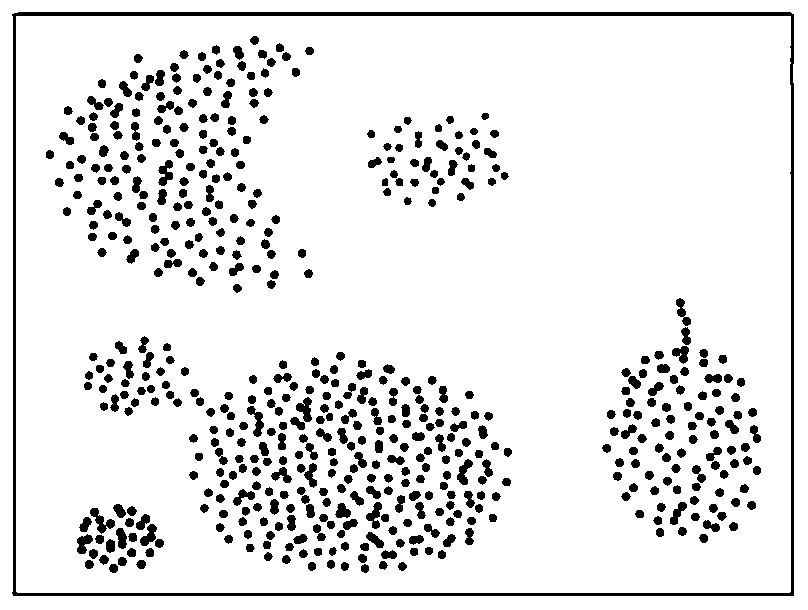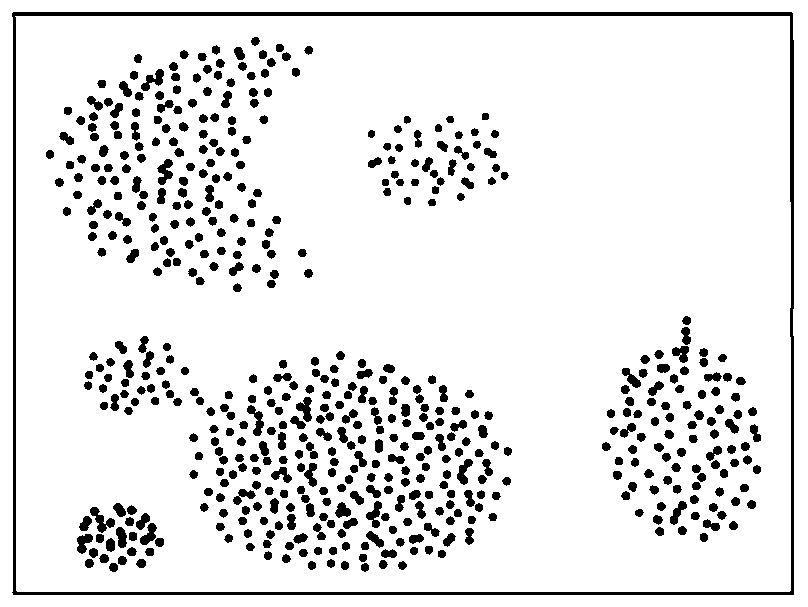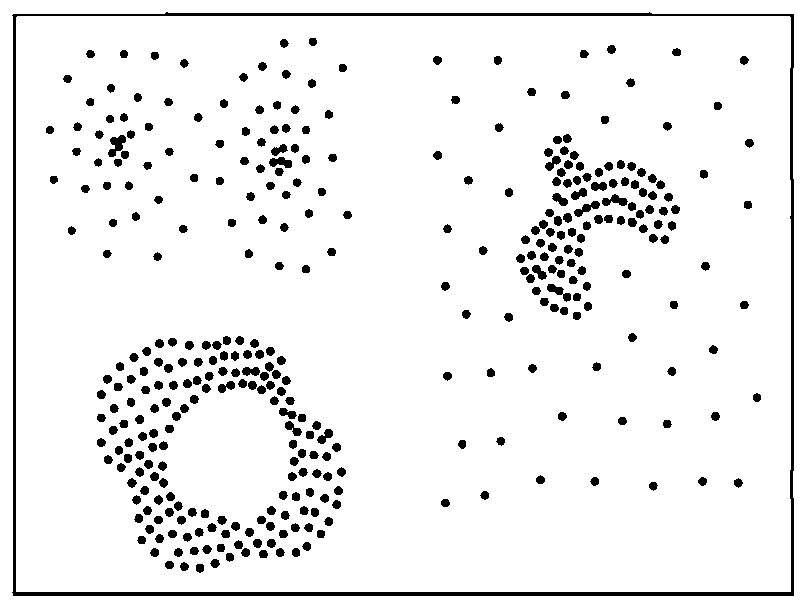Density peak clustering algorithm based on K neighbors and shared neighbors
A clustering algorithm and technology of sharing neighbors, applied in computing, computer components, instruments, etc., can solve problems such as poor clustering effect and achieve good clustering effect
- Summary
- Abstract
- Description
- Claims
- Application Information
AI Technical Summary
Problems solved by technology
Method used
Image
Examples
Embodiment Construction
[0048] refer to Figure 1-6 . The specific steps of the density peak clustering algorithm based on K nearest neighbors and shared nearest neighbors in the present invention are as follows:
[0049] Step 1. Input the data Data to be clustered, the neighbor parameter K and the radius r of the neighborhood;
[0050] Step 2, data processing, including filling of missing values and data normalization;
[0051] Step 3, calculate the distance between data samples, calculate ρ and δ of each data sample point according to formula (1), (2), (3);
[0052]
[0053]
[0054] Among them, d in formula (1) and (2) c is the cutoff distance, d ij is the Euclidean distance between sample i and sample j.
[0055]
[0056] Among them, d ij is the Euclidean distance between sample i and sample j, and p is the local density of sample points.
[0057] Step 4. Construct a decision diagram according to the values of ρ and δ, and select the set C composed of each cluster center;
[...
PUM
 Login to View More
Login to View More Abstract
Description
Claims
Application Information
 Login to View More
Login to View More - R&D
- Intellectual Property
- Life Sciences
- Materials
- Tech Scout
- Unparalleled Data Quality
- Higher Quality Content
- 60% Fewer Hallucinations
Browse by: Latest US Patents, China's latest patents, Technical Efficacy Thesaurus, Application Domain, Technology Topic, Popular Technical Reports.
© 2025 PatSnap. All rights reserved.Legal|Privacy policy|Modern Slavery Act Transparency Statement|Sitemap|About US| Contact US: help@patsnap.com



